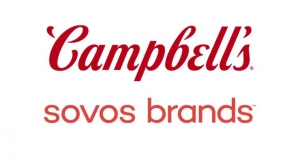04.08.13
In the wake of the Greek yogurt craze, yogurt remains a superfood with significant upside, according to a recently released report from Rockville, MD-based market research firm Packaged Facts.
In “The Yogurt Market and Yogurt Innovation: Greek Yogurt and Beyond,” Packaged Facts forecasts that U.S. retail sales of yogurt will approach $9.3 billion by 2017, up from $7.3 billion in 2012. Even with its recent market growth, yogurt continues to be consumed at a much lower per capita rate in the U.S. than in other countries where yogurt is a staple. Moreover, yogurt is spreading beyond the breakfast daypart, reflecting the “breakfast-all-day” culinary and menu trend.
In the U.S. market, retail dollar sales of Greek yogurt increased more than 50% in 2012 to reach $1.6 billion, with significant gains in the mass-market as well as natural and specialty retail channels. At the same time, non-Greek yogurt saw its sales decrease. According to David Sprinkle, publisher of Packaged Facts, “Greek yogurt has raised its share of the refrigerated yogurt market to 35%, up from only 1% in 2007.” Even though it is unlikely that Greek yogurt can keep up its growth marathon, Greek yogurt has continued to increase market sales and share through first quarter 2013.
Private label controls a large share of the market in refrigerated yogurt, in aggregate ranking as the number two brand overall, with growth outpacing the market. In frozen yogurt, private label ranks as the number one brand, although it is a far less important player in yogurt drinks. The restaurant and foodservice industry also is getting in on the action, with Chobani and Dannon opening up their own yogurt shops, and yogurt appearing on more restaurant menus.
The Packaged Facts report also shows how innovative marketers are driving the yogurt and especially Greek yogurt bandwagon into other food categories. Yogurt’s popularity and “healthy halo” have propelled a spill-over over into product categories such as smoothies, frozen yogurt and novelties, cream cheese and butter, salad dressings, dips and spreads, and granola bars, among others.
For more information, click here.
In “The Yogurt Market and Yogurt Innovation: Greek Yogurt and Beyond,” Packaged Facts forecasts that U.S. retail sales of yogurt will approach $9.3 billion by 2017, up from $7.3 billion in 2012. Even with its recent market growth, yogurt continues to be consumed at a much lower per capita rate in the U.S. than in other countries where yogurt is a staple. Moreover, yogurt is spreading beyond the breakfast daypart, reflecting the “breakfast-all-day” culinary and menu trend.
In the U.S. market, retail dollar sales of Greek yogurt increased more than 50% in 2012 to reach $1.6 billion, with significant gains in the mass-market as well as natural and specialty retail channels. At the same time, non-Greek yogurt saw its sales decrease. According to David Sprinkle, publisher of Packaged Facts, “Greek yogurt has raised its share of the refrigerated yogurt market to 35%, up from only 1% in 2007.” Even though it is unlikely that Greek yogurt can keep up its growth marathon, Greek yogurt has continued to increase market sales and share through first quarter 2013.
Private label controls a large share of the market in refrigerated yogurt, in aggregate ranking as the number two brand overall, with growth outpacing the market. In frozen yogurt, private label ranks as the number one brand, although it is a far less important player in yogurt drinks. The restaurant and foodservice industry also is getting in on the action, with Chobani and Dannon opening up their own yogurt shops, and yogurt appearing on more restaurant menus.
The Packaged Facts report also shows how innovative marketers are driving the yogurt and especially Greek yogurt bandwagon into other food categories. Yogurt’s popularity and “healthy halo” have propelled a spill-over over into product categories such as smoothies, frozen yogurt and novelties, cream cheese and butter, salad dressings, dips and spreads, and granola bars, among others.
For more information, click here.



























